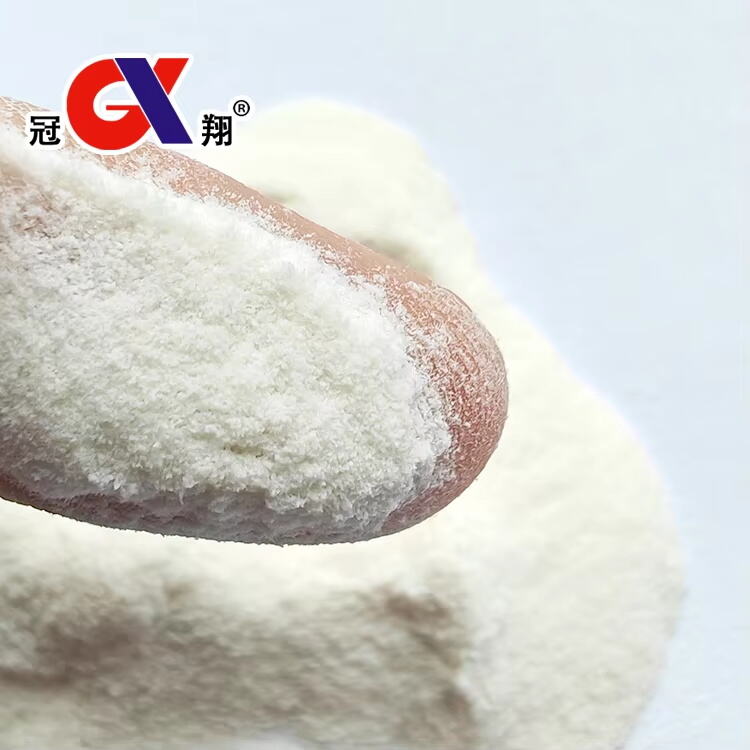מהו הידרוקסיפרופיל מתילצלולוז (HPMC)?
הידרוקסיפרופיל מתיל целולוז, הידועה גם בשם HPMC, נוצרת מצלולוז ומומשת על ידי הוספת רכיבים הידרוקסיפרופיליים ומתיליים. שינויי המבנה תורמים למסיסות טובה יותר ובעזרתם ניתן ליצור קרומים חזקים, מה שמסביר את השימוש הנרחב בה בחברות תרופתיות, במזונות ובחומרים בנייה. לשם ייצור ה-HPMC, מתרחשת תהליך שנקרא אסטריפיקציה, שבו מחברים את הקבוצות המיוחדות לבסיס הצלולוז. תהליך זה יוצר מספר סוגים של HPMC עם תכונות מעט שונות, בהתאם לצורך התעשייתי. בהתחשב במגמות בשוק, אנו רואים עניין גובר וגדל ב-HPMC ברחבי העולם. חברות בנייה משתמשות בכמויות גדולות יותר בתבניות שלהן, בעוד חברות תרופות מוצאות דרכים חדשות להטמעה בתבניות רפואיות. גם תעשיית המזון מוצאת כל הזמן יישומים חדשניים לחומר הגמיש הזה.
הרכב הכימי ותהליך הייצור
הידרוקסיפרופיל מתיל целולוז, או בקצרה HPMC, מקבל את תכונותיו המיוחדות משילוב של קבוצות הידרוקסיפרופיל ומתיל שמחוברות לבסיס של סיבי התשע. יצרנים מייצרים אותו בתהליך אסטריפיקציה מבוקר שמוסיף את הקבוצות הכימיות הללו, מה שעוזר בחומצה להימס טוב יותר וליצור קרומים כשמגיע הרגע. מה שקורה במהלך השינוי הכימי הזה ממש חשוב, מכיוון שזה מאפשר ל-HPMC לעבוד טוב בדוגמאות כמו תרופות וمنتجات מזון, גם כאשר יש עמידות טובה יותר לחום ופחות סיכוי להתפרקות על ידי מיקרואורגניזמים. כיום קיימות למעשה מגוון סוגי HPMC, כל אחד מהם מיוצר למטרות ספציפיות בתחומים שונים, כולל תרופות, עיבוד מזון ואפילו חומרי בנייה. עם הاهتمام העולמי ב-HPMC שגדל בצורה מתמדת בשנים האחרונות, חברות מוצאות דרכים חדשות לשלב את התוספת היציבה הזו לתוך מוצרים ותהליכים שלהם.
מקורות טבעיים מול שינויים סינתטיים
HPMC מתחיל את חייו כצלולוז, החומר שמאותו יוצרים הצמחים את דפנות התאים שלהם, ושמם מרובה בדוגמאות כמו פשתן ופסולת עץ. זה מעניק ל-HPMC יתרון כשמדובר בידידותיות לסביבה כבר בהתחלה. כשמייצרים משנים את הצלולוז באמצעות תהליכים כימיים, הם למעשה משפרים את הביצועים שלו בישומים תעשייתיים שונים. השינויים האלה הופכים את HPMC לשימושי במיוחד בייצור מזון, בתעשייה הפקדנית ובחומרים לבנייה. החומר שומר על יציבות גם תחת חום ומתמוסס טוב יותר מצלולוז רגיל. כשמפעלים מתחשבים ביתר באפקטים הסביבתיים, HPMC בולט במיוחד, שכן מחקר מצביע על כך שהוא בטוח ובר-קיימא. יצרני מזון מעריכים אותו בגלל היכולת להסיק, בעוד חברות תרופות סומכות עליו לצורך שחרור מבוקר של חומר פעיל. מה שמייחד את HPMC הוא שהוא משלב את המרכיבים הטובים ביותר מהטבע ומהמדע.

תכונות מפתח של הידרוקסיפרופיל מתיל צלולוז
שמירת מים ויציבות תרמלית
הידרוקסיפרופיל מתיל צלולוז, או בקצרה HPMC, בולטת בשל היכולת שלה להחזיק מים. תכונה זו הופכת אותה למועילה בתחומים רבים, לרבות חומרי בנייה ומוצרי מזון, בהם שליטה על רטיבות היא קריטית. ניקח לדוגמה תבניות בטון. כאשר היא מותאמת לתבניות אלו, HPMC зам slowing down the drying process so the final product ends up stronger and lasts longer. יתרון נוסף הוא היכולת שלה לעמוד בחום מבלי להתפרק בתהליכי ייצור. לכן, יצרנים רבים סומכים על HPMC במיוחד בת industriahs כמו עיבוד מזון, שם נפוצות תנודות בטמפרטורה. מחקרים הראו שוב ושוב שמוצרים שפותחו עם HPMC שומרים על רמת רטיבות טובה בהרבה מאופציות אחרות. לא מפתיע, אם כן, שמקצועיי הבנייה והמזון מעדיפים את התוסף הזה כשנוגע ליציבות.
הדבקה ועמידות ב-pH
HPMC מבליט את עצמו מכיוון שהוא נצמד היטב לפני שטח, מה שעושה אותו מצוין לדברים כמו צבעים וחומרי סגירה. הידוק הזה פועל פלאים בתחומים רבים, לרבות ברפואה שם הוא עוזר להחזיק יחד גלולות ובבנייה שם הוא יוצר חומרי סגירה עמידים שנשארים לאורך זמן למרות שינויי מזג האוויר. מה שעושה את ה-HPMC אפילו יותר שימושי הוא האופן שבו הוא מתמודד עם רמות שונות של חומצה מבלי להתפרק. תרופות רבות זקוקות לסוג הזה של יציבות שכן הרכב הגוף משתנה כל כך הרבה, בעוד יצרני מזון גם כן סומכים על ביצועים עקביים מכיוון שמוצרי המזון עוברים תהליכי עיבוד עם רמות pH משתנות. העובדה ש-HPMC ממשיך לעבוד באופן מהימן ללא קשר לסוג הסביבה הכימית שהוא נתקל בה, מסבירה למה כל כך הרבה חברות חוזרות אליו שוב ושוב לצורך צורכיהן.
הידרוקסיפרופיל מתיל целולוז משלב שמירה יוצאת דופן על מים, סטייה תרמלית, הדבקה ועמידות ב-pH, מה שהופך אותו לפולימר רב-תכליתי המשמש בתעשייה ברחבי העולם.
יישומים פרמצבטיים של HPMC
קפסולות וקליפות טבלאות
חברות תרופות סומכות מאוד על הידרוקסיפרופיל מתיל צלולוז או HPMC כשמגיעות לעטיפת הגלולות והקלפסות הקטנות כולנו נוטים לבלוע. מה שמייחד את החומר הזה? ובכן, הוא מעניק לתרופות את המשטח חלק שבעצם חשוב ממש עבור אנשים שמתקשים לבלוע את התרופות שלהם. ונודה באמת, אף אחד לא רוצה להתיישף על משהו. יתרון נוסף גדול של HPMC הוא הגנה מפני חדירת לחות. הגנה זו שומרת על היציבות של התרופות למשך זמן ארוך יותר במדפים של החנויות מבלי לאבד את האפקטיביות שלהן. מבחני שטח מצביעים על כך שכשיצרנים משתמשים ב-HPMC בנוסחאות שלהם, הם יכולים לשלוט בדיוק מתי התרופה משתחררת בתוך הגוף. דיוק כזה מסביר למה כל כך הרבה חברות תרופות מוצאות חזרה ל-HPMC שוב ושוב לצרכים הקשורים לקפסולות.
מערכות достרת תרופות מבוקרות
הידרוקסיפרופיל מתיל צלולוז, או בקיצור HPMC, הופכת להיות חשובה יותר בפיתוח מערכות שיחרור של תרופות במתכונת מבוקרת. מה שמייחד את ה-HPMC הוא האופן שבו היא שולטת בשעת השיחרור של התרופות לגוף. למטופלים עם בעיות בריאות כרוניות כמו סוכרת או יתר לחץ דם, זה חשוב במיוחד, מכיוון שזה שומר על ריכוז קבוע של התרופה בזרם הדם. ריכוזים יציבים פירושם תוצאות טיפול טובים יותר באופן כללי. בהסתכלות על מה שחוקרים פורסמים בתקופה הנוכחית, נראה שיש סיבת מובהקת כיוון שימוש במערכות מבוססות HPMC. למה? בגלל שזה פשוט עובד טוב יותר בהבטיחת עמידות של המטופלים במתכונת התרופה ובהשגת תוצאות בריאות טובות יותר. ניסויים קליניים הראו שוב ושוב שה-HPMC מצליח לשלוט בקצב שיחרור התרופה בצורה יעילה. לכן, רוב חברות התרופות הגדולות מתייחסות ל-HPMC כאל רכיב חיוני בפיתוח של תרופות רבות במתכונת שיחרור ממושך.
HPMC בחומרי בנייה
מלטים וחומרי הדבקת אריחים
הידרוקסיפרופיל מתיל צלולוז (HPMC) הפכה למרכיב מפתח במטיטים בנייה מודרניים ודבקים לרצפה, שכן היא אכן מגבירה את הביצועים שלהם. מה שמייחד את HPMC הוא היכולת שלה להחזיק מים, מה שנותן לעובדים יותר זמן להחיל את התערובת בצורה נכונה לפני שהיא מתחילה להתייצב. חלון העבודה המורחב הזה מביא לתוצאות טובות יותר בעת שילוט רצפות או ערבוב מטיט. תכונת שימור המים הזו תורמת גם לשלב האפייה, ומביאה לתוספת חוזק בקשרי הדבקה ולמבנים בעלי עמידות ממושכת יותר. לפי נתוני תעשייה עדכניים משנת 2023, השימוש ב-HPMC גדל ב-15% בקירוב בהשוואה לשנה הקודמת, רק ב צפון אמריקה. בוני מקצוע מציינים במפורש יותר ויותר מוצרים שמכילים HPMC לא רק מטעמי ביצועים אלא גם בגלל שזה תואם לסטנדרטים של בנייה ירוקה שלקוחות רבים מצפים לקבל כחלק מהדרישות לפרויקט.
תוספות לבטון ולמ chống מים
HPMC הפכה למתגמלת במשחק בתוספי בטון, ממש מגבירה את זרימת חומרי הבנייה ואת הביצועים הכוללים. כאשר הוא מעורבב בבטון, הוא הופך את הנפקה הרבה יותר חלק ומשפר את היכולת לעבודה כך שעובדים יכולים להתמודד איתו טוב יותר במהלך עבודות הבנייה המסיביות. מה שמבדיל את HPMC הוא תכונות ההדודה המצטיינות שלו. קבלנים אוהבים להשתמש בו באזורים שבהם מבנים זקוקים להגנה נוספת מפני נזק מזג אוויר ומסוכנים סביבתיים אחרים. מחקר שוק מראה מגמה רמה מובהקת של גידול במוצרים של HPMC המגזר הבנייה ממשיך לאמץ פתרונות אלה כי הם באמת להאריך את תוחלת החיים של הבניין ולהפחית את עלויות התחזוקה לאורך זמן. מבניינים מגורים למתקנים תעשייתיים, HPMC ממשיך לזכות במושך כהשקעה חכמה לאינטגרות מבנית לטווח ארוך.
שימושים בתעשיית המזון של HPMC
מעבה ומייצב על בסיס צמחי
תעשיית המזון תלויה רבות בהידרוקסיפרופיל מתיל צלולוז, הידועה גם בשם HPMC, כמקשה ומייצב מהצומח. מה שעושה את ה-HPMC כל כך מועילה הוא העובדה שהיא משנה את kếtס הטקסטורה והע consistency של המזונות, מה שמסביר למה יצרני המזון חוזרים אליה שוב ושוב לכל מיני צרכים בישולתיים. אנו מוצאים את ה-HPMC מביאה תועלת רבה בדברים כמו רוטבים קרמיים, רוטבי סלטים, ואפילו בממתקים שבהם היא מעניקה את התחושה הפה הנעימה, וכן מאריכה את חיי המדף של המוצרים. ככל שיותר אנשים מתחילים לחפש מרכיבים שמגיעים מהצומח ולא מהמעבדה, HPMC פשוט מתאימה למה שצרכנים רוצים כרגע. חברות מזון משתמשות בה בכל מקום, בין אם הן יוצרות אפשרויות טבעוניות חדשות ובין אם הן סתם מנסות לגרום למוצרים הרגילים שלהן להיראות טוב יותר על תגי האריזה על ידי הסרת תוספים מלאכותיים.
תחליף ג'לטין טבעוני
HPMC הפך בתקופה האחרונה לפופולרי למדי כחלופה טבעונית לג'לטין מסורתי, במיוחד בקרב אנשים שמקפידים על מה שהם אוכלים או חיים אורח חיים טבעוני מחמיר. מה שעושה לחומר הזה את העבודה שלו כל כך טוב הוא היכולת שלו ליצור את אותה תחושת ג'לי שמקווים לקבל ממטעמים וסוכריות, מבלי להתפשר על הטעם או על תחושת הפה. ניתן לראות תעשיית המזון עוברת שינוי ברור לעבר מרכיבים צמחיים בתקופה האחרונה, וזה גם מסביר למה HPMC מופיע בתדירות הולכת וגדלה ברשימת המרכיבים. יצרני המזון אוהבים את היותו רב-תכליתי בישומים שונים, ועדיין מספק את הדרישות של אלו שמעדיפים להימנע ממוצרים מן החי. עם מחקרים מתמשכים שמצביעים על מגוון יתרונות בחלופות הצמחיות, HPMC ממשיך לצבור נוכחות בשווקים בהם הביקוש למטבח טבעוני רק גדל.
בטיחות וامتثال לתקנות
אישורים של FDA ו- EFSA
כשמוסדות כמו FDA ו- EFSA מכירים בחומר הידרוקסיפרופיל מתיל צלולוז (HPMC), הם בעצם אומרים לכולם שהחומר בטוח לשימוש במזון ובתרופות. עבור חברות שמנסות להביא את המוצרים שלהן למדפים ברחבי העולם, אישורים כאלה מהרשויות הם כמעט חובה. אנשים נוטים לסמוך יותר על מוצרים כשברשימת המרכיבים הם רואים חומרים שאושרו על ידי מוסדות מוכרים. מחקר שוק תומך בכך ומציג שצרכנים אכן מתייחסים ברצינות לאישורים האלה. הביטחון הזה של הצרכנים הוא מה שקובע בקביעת קבלת המוצר על ידי החנויות ובעצירת המותג לאורך זמן, שכן הצרכנים מקשרים בין האישורים האלה לאמירה של ממש על סטנדרטים של ביטחון.
יתרונות חומריים ללא טוקסינים ולאלרגניים
מה שעושה את HPMC כל כך יקר ליישומים רגישים הוא האינו טוקסיות שלו ופרופיל ההיפואלרגני. אנחנו רואים את החומר הזה בכל מיני תחומי טיפול אישי בימים אלו, מקרים ועד בסיסי עיפור. דרמטולוגים ביצעו בדיקות שמציגות שרוב האנשים בכלל לא מגיבים אליו בצורה שלילית. דוחי צרכנים תומכים בכך, ורבים מהקונים מחפשים במכוון מוצרים עם תווית היפואלרגנית כשקונים פריטים לטיפול בעור. חברות מחקר שוק עוקבות אחרי המגמה הזאת בצורה קרובה בגלל שחברות מעוניינות לדעת מה עובד הכי טוב עבור לקוחות עם עור רגיש. לייצרנים שמנסים לשמור על המוצרים שלהם תחרותיים ועם זאת בטוחים, HPMC מציע נקודת איזון בין יעילות לרקינות שצרכנים דורשים יותר ויותר.
שאלות נפוצות
ממה מורכבת הידרוקסיפרופיל מתיל צלולוז (HPMC)?
HPMC מיוצרת מצלולוז, פולימר טבעי המצוי בקירות התא הצמחי כמו סיבי פשתן וע pulp עץ.
אילו יישומים עיקריים יש ל-HPMC?
HPMC משמשת בתעשיית התרופות לצורך ציפוי טבלאות וקלפסות, בתעשייה הבנאייה לתוספים למörtר ולבטון, ובתעשייה המזון כמעבה וכאלטרנטיבה צמחונית לג'לטין.
מדוע HPMC נחשב לבטוח?
HPMC מזוהה על ידי גורמי רגולציה כמו FDA ו- EFSA בשל תכונותיו הלא-רעילות והipoאלרגנטיות, מה שמבטיח את ביטחונו ביישומים תזונתיים ופארמאцевטיים.
איך HPMC עוזר במערכות достרכות שליטה בשחרור תרופות?
HPMC מבטיח שחרור עקבי של תרופה לאורך זמן, מה שעוזר לשמור על רמות דם יציבות של תרופות, ומשפר את עמידת המטופל והתוצאות הטיפוליות.
 EN
EN
 AR
AR
 CS
CS
 DA
DA
 NL
NL
 FI
FI
 FR
FR
 DE
DE
 EL
EL
 HI
HI
 IT
IT
 JA
JA
 KO
KO
 NO
NO
 PL
PL
 PT
PT
 RO
RO
 RU
RU
 ES
ES
 SV
SV
 IW
IW
 ID
ID
 SR
SR
 SK
SK
 UK
UK
 VI
VI
 HU
HU
 TH
TH
 TR
TR
 AF
AF
 MS
MS
 CY
CY
 IS
IS
 BN
BN
 LO
LO
 LA
LA
 NE
NE
 MY
MY
 KK
KK
 UZ
UZ


